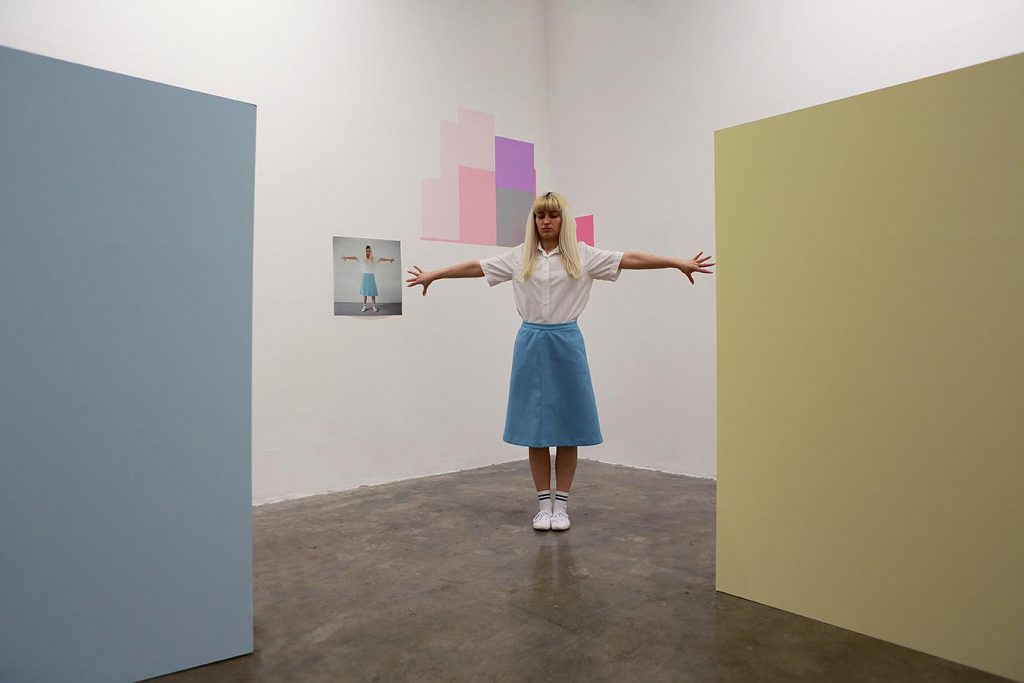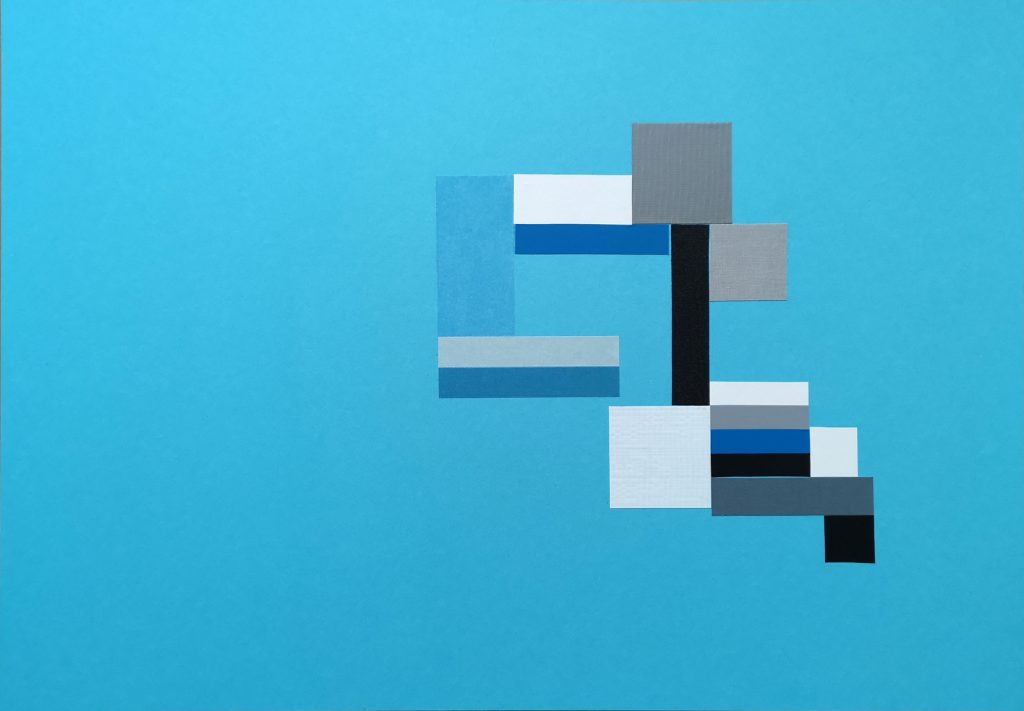What made you choose the topic “Performative exercises with absent things” (“Exerciții performative cu lucruri absente”) for the CAMPart online mentorship program? How relevant do you consider this topic to be for the new generation of artists?
My proposal started from the research I have been working on for a few years, also, currently, as part of a practical PhD. What interested me a lot was how performance practices could incorporate notions of absence and the invisible, even though this association does not seem to work at first glance. How can performance, the medium most associated with the idea of presence, of “here and now,” incorporate that which is not present? Lately I have been thinking that some of the exercises I proposed for the mentorship program, even though they are tied to my interests in my works specifically, can produce completely different effects and associations when conveyed to others. I also thought that a performance practice workshop can be an accessible method through which even artists who do not use this medium consistently can work practically, in a short amount of time and with limited resources. Lastly, this is what I find most important: not as much getting the participants to work with the same topics I work with, but to use them as pretexts for their own practice.
Is there a connection between studio practice and teaching practice?
In a way, the answer is definitely yes, in the sense that you cannot teach art if you do not have studio work experience, at least when it comes to practice. On the other hand, I think it is important for educational practice to be broader than one’s own art practice, otherwise it makes no sense for the attendees. As a mentor, you need to be able to advise students who wish to work in an area you deeply dislike or is of no interest for your own practice. The question is how do you do that, how do you offer relevant examples and suggestions that can be useful to someone with a completely different perspective? It’s not easy.
I recall a situation from a workshop held by choreographer Xavier Le Roy, which I took part in in Vienna, during the danceweb program, in 2016. It was a weekend workshop, and Xavier came prepared with a few discussion topics for those two days. I remember many of the participants were disappointed – they were, for the most part, dancers who had come to learn something about movement practice. When they expressed their discontent, Xavier’s answer was vehement: what’s the point in learning moves from me? We’re not working on a piece, the purpose of the workshop is not for you to learn my practice, but to develop your own. I remember fully agreeing with him, he was right.
Were you inspired by your contact with the young artists? What would you say to artists who are just starting out and looking for a direction?
The experience of the workshop was great, I really enjoyed working with the participants. I was very happy to see their interventions developing from one week to the next and how quickly you could see clear, and highly diverse, areas of interest forming, even though the exercises were the same for everyone. I advise beginner artists to continue working, regardless of conditions. It is clear that this path is an insecure, unstable, and financially insufficient one. Therefore, it is important that one’s motivation be in the right place, otherwise it makes no sense. If this motivation exists, the obstacles and setbacks we encounter, however relevant they may be in private, do not so much matter in the long run, in terms of practice. In fact, nobody really cares if you don’t produce anything for a longer period of time. So the most important thing is to find solutions that work within existing conditions, as restrictions can sometimes prove highly productive.
How do you see the reinvention of art practice, of art making and exhibiting systems, in the context of the current changes, which will impact the art world? What do you think will change in the long run?
I believe the discussion around completely reinventing art practice is too loud nowadays, possibly because of our surprise at the new conditions, so different from what we were used to. But I believe that, in the long run, the change will not be that radical. In any case, art practice and art making systems change constantly. This continuous renegotiation of boundaries and the incorporation of new forms and practices from other fields, together with the statement: from now on, this is art – all these are almost part of the definition of contemporary art. Art does these things more quickly than other fields. So any change attributed to this period will be, inevitably, preceded and followed by other changes.
Of course, for a time certain formats will no longer be possible and will be replaced with others, then we will likely return to the initial formats complemented by the new ones. If we only think about how many times painting supposedly died, only during the span of our careers, we realize this never actually happened. Not only is it still here, but we can’t replace it with anything. New media and formats do not replace the old, thankfully. Perhaps before, we could hold performances with 50 people, then we couldn’t anymore, and now we hold them with 5 people. This does not mean we couldn’t imagine an event with 500 people at some point, if there’s enough interest, of course. And then maybe we will return to 5 again.
I therefore don’t believe that online events, as useful as they are at this time, will replace physical ones, just as a Saturday evening Zoom meeting won’t replace getting together at a bar if the latter is possible. Similarly, the physical experience produced by an artwork, an action, or even a conceptual intervention in a physical space cannot be reconfigured as a digital experience. In fact, I don’t think any format can replace another. What is important, in my view, is what is specific to each and how each can be worked with.
What seems to be happening instead is not a change, but rather an intensification of something already present, and that is the precarization of the field of art, together with that of other vulnerable social categories. And that is not just because art events are being cancelled and, implicitly, artists’ remunerations with them (which were probably small to begin with), but also because other related activities are being affected. Most artists need side work to cover their expenses. What I therefore wish for in terms of long-term changes, though I’m not sure we have reason to be optimistic, is to have a society that tries to reduce this precarity, not just for artists, but for other impacted categories. A safer, more equitable remuneration.

Irina Gheorghe, Betraying the Senses: How to Speak of What Is Not There, instalație și performance, Project Arts Center, Dublin, 2020. Photo credit: Senija Topcic


